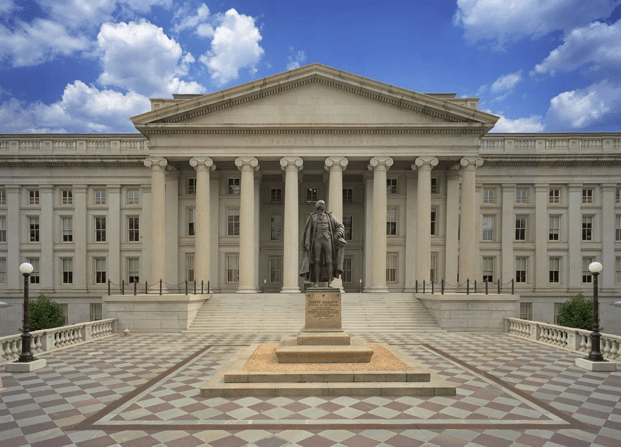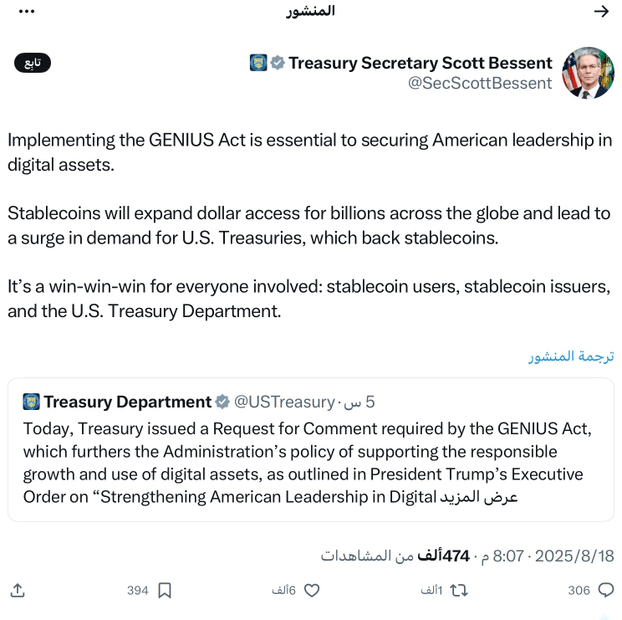
The U.S. Department of the Treasury is seeking public comments on the enforcement tools for stablecoins under the GENIUS Act.
Stablecoin issuers face a delay of up to 120 days after policy implementation or 18 months before GENIUS takes effect.
The Treasury aims to balance financial safeguards with manageable consumer protection requirements for issuers.
The U.S. Department of the Treasury is requesting feedback from the community on the GENIUS Act to assist in the implementation of stablecoin regulation. The law will not take effect until the responsible agencies establish their own policies, or 18 months have passed.
This current round of comments focuses on enforcement tools. The Treasury wants to prevent financial misconduct without placing an impossible burden on issuers.
The U.S. Department of the Treasury is requesting feedback on stablecoins
Since President Trump signed the GENIUS Act last month, the digital currency community has been waiting to see what this landmark legislation will achieve. It has raised new questions and proved optimistic for the markets, but these are side effects.
To help answer the big questions, the U.S. Department of the Treasury is soliciting comments on the implementation of stablecoin reform:
The statement said that "[the Treasury] is providing the opportunity for individuals and organizations interested to provide feedback on the methods or techniques or innovative or new strategies used by regulated financial institutions, or that they could use, to detect illegal activities related to digital assets."
In other words, the U.S. Department of the Treasury is looking for community feedback on the stablecoin sector, specifically on the topic of enforcement tools. Its goal is to maintain safeguards that can prevent financial risks without causing undue hardship for financial institutions.
Grace period solution
Although the law was signed a month ago, it has not yet taken effect. Stablecoin issuers will receive a grace period of either 18 months or 120 days after the U.S. Department of the Treasury and the Federal Reserve develop their own policy for implementation.
In other words, this is the first step toward achieving a shorter implementation timeline. Treasury Secretary Scott Pruitt welcomed this initiative on social media, pointing to President Trump's plan to use stablecoins to enhance the dominance of the dollar.

Sticky concerns for issuers
Specifically, the law requires stablecoin issuers to hold U.S. Treasury bonds, so the agency has a key role in practical implementation. Issuers like Tether and Circle have amassed Treasury bonds over the past few months, but there are still some unanswered questions.
The GENIUS Act should require Tether to conduct regular third-party audits to operate in the U.S., but this has not happened, and it has not been closed. The grace period keeps everything in a state of uncertainty at present.
Compared to the first quarter of 2025, the stablecoin issuer significantly reduced its investments in U.S. Treasury bonds. This seems a bit strange, considering that the GENIUS Act has become law.
The company has reorganized some of its reserves, which may facilitate mandatory inspections, but there does not appear to be any rush so far.
All of this means that this situation will not last forever. With the Treasury receiving feedback and suggesting minor adjustments to implementation, the new model for stablecoins is getting closer and closer.
#اخبار_العملات #اخبار_الكريبتو_العاجلة #اخبارالعملات #GENIUS #BinanceSquare
